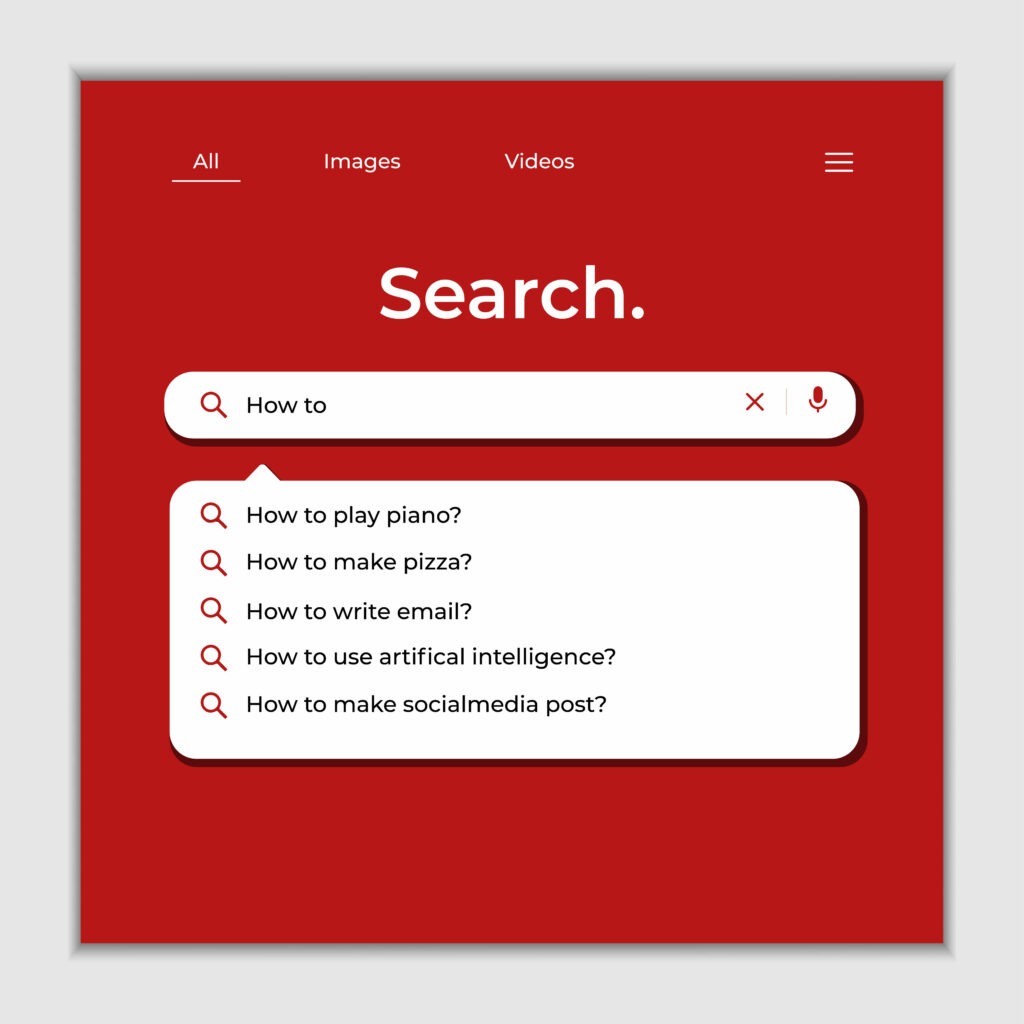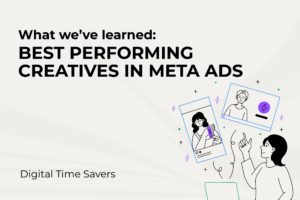How to Find Your Current Rankings and Actually Improve Your SEO
Have you ever typed your business name or your top product into Google and proceeded to scroll, scroll, and scroll some more, only to realize you’re nowhere to be found?
It’s frustrating, especially when you’ve invested in your website, your brand, maybe even some SEO already.
The truth is, Google rankings don’t just depend on having a good-looking website. They depend on how well your entire digital presence aligns with what search engines, and yes, people, actually want.
So if you’re wondering:
- “Where is my site ranked on Google?”
- “Why am I not showing up?”
- “How do I actually improve my SEO?”
This guide is for you. Let’s break it down.
How to Actually Check Where You Rank on Google
Before you can improve your rankings, you need to know where your site actually stands. And no, simply Googling your business name or your favorite keyword on your phone doesn’t give you a reliable answer.
That’s because Google’s search results are personalized. What you see in search isn’t necessarily what your customers see. Factors like your location, browsing history, device type, and even how you’ve interacted with your site before all influence what shows up for you. So if you’re just searching in a standard browser window, you’re likely getting a skewed version of the truth: one that makes it hard to spot real issues or opportunities.
Instead, here’s how to check your rankings properly:

Use Incognito Mode
To get a more accurate read on your rankings, start by using incognito or private browsing mode. This strips away personalization factors like cookies and search history, giving you a closer approximation of what a “cold” user might see. It’s not perfect, but it’s a lot better than default search.
Search Google the right way
You can also use a simple Google trick: the site: search operator. For example, if you type site:yourdomain.com into Google, it will show you which of your pages are indexed. In other words, which ones Google knows about. You can combine this with keywords to check specific ranking visibility.
For instance, searching site:digitaltimesavers.com SEO tips can show you if your blog post on SEO actually appears for that keyword.
Use SEO Tools
Still, these methods only scratch the surface. If you want a real understanding of where you rank, what’s driving your traffic, and where you’re missing out – tools like Google Search Console are essential. It’s free, it’s straight from Google, and it shows you the actual keywords people are using to find your site. You can see your average position, how often your pages show up, what people are clicking, and where your impressions are slipping.
Paid (but powerful):
For even deeper insights, pro-level tools like Ahrefs, SEMrush, and Ubersuggest come into play. These platforms not only show your current rankings, but also track competitors, identify keyword gaps, highlight technical issues, and help you spot ranking opportunities you didn’t even know existed. Ahrefs is particularly strong on backlink data, SEMrush is fantastic for overall site audits and keyword strategy, and Ubersuggest offers a solid (and more affordable) option for beginners or smaller teams.
And if you’re wondering whether checking your rankings is worth the time, consider this: a 2024 Backlinko study found that the #1 result in Google has a CTR of 27.6%. Even more interesting, less than 1% (0.63%)of people ever make it to page two. So unless you know exactly where you stand, you might be pouring time and money into a website that’s invisible to the people who matter most.
Why Your Site Isn’t Ranking (Or Ranking Where You Hoped)
If your site isn’t showing up in search results, or it’s buried under a pile of competitors, it’s not random. Google’s algorithm looks at hundreds of signals to decide which pages to rank, and in what order. When a page doesn’t make the cut, there’s usually a clear reason why.
Let’s walk through the most common culprits we see when clients come to us asking, “Why am I not ranking?”

You’re Targeting the Wrong Keywords
Sometimes the issue isn’t that your content is bad, it’s that you’re aiming for the wrong target. If you’re trying to rank for broad, high-competition keywords like “shoes” or “marketing,” you’re going head-to-head with billion-dollar brands with armies of content writers and years of domain authority.
The better move? Find high-intent, low-competition keywords that match what your audience is actually searching. Long-tail phrases like “vegan hiking shoes under $100” might not get millions of searches, but they convert, and they’re easier to rank for.
Also, make sure the keyword matches the page. Trying to rank a blog post for a commercial keyword or a product page for an informational query? That’s a fast track to being ignored by Google.
Your Site Has Technical Issues
Technical SEO is the foundation everything else sits on and if that foundation is shaky, your rankings will be too.
Slow load speeds, broken links, mobile responsiveness issues, messy URL structures, or blocked pages in your robots.txt file can all send red flags to Google’s crawlers. And the worst part? These issues often go unnoticed by business owners because the site looks fine.
Google’s algorithm is heavily focused on user experience. If your site loads slowly or doesn’t function well on mobile, it’s likely being penalized, especially since over 60% of searches now happen on phones.
Your Content Doesn’t Match Search Intent
In 2025, Google cares more than ever about intent. That means when someone searches for a phrase like “best hiking shoes,” they’re likely looking for a comparison, a review, or a guide…not a single product page or a thin affiliate roundup.
If your content doesn’t align with what the searcher expects to see, in format, depth, or tone, Google won’t rank it, even if it’s technically well-written.
There are four basic types of search intent:
- Informational: Looking to learn something
- Navigational: Looking for a specific website
- Transactional: Ready to buy or act
- Commercial Investigation: Comparing options
Make sure your content matches the right one. You’d be surprised how often this alone fixes the ranking problem.
You Don’t Have Backlinks (Or They’re Low Quality)
Backlinks (links from other websites to yours) are still one of Google’s most powerful ranking signals. Why? Because they act like trust votes. If reputable sites link to your content, Google sees that as a sign of authority.
But not all links are created equal.
Ten high-quality backlinks from relevant sites will do more than a hundred spammy ones from irrelevant directories. Worse, poor backlink profiles can actually hurt your rankings, especially if they come from link farms, paid placements, or sketchy sources.
If your competitors are earning links through media features, guest posts, or valuable content, and you’re not, they’ll outrank you every time.
Your Site Isn’t Indexed Properly
This one’s surprisingly common: your site might not be ranking because Google hasn’t even indexed it yet.
To check, type site:yourdomain.com into Google. If no results show up, or only a few of your pages appear, that’s a red flag.
There are a few reasons this could happen:
- You accidentally set a page to “noindex”
- Your sitemap hasn’t been submitted to Google
- Your site has crawl issues blocking access
Good news: tools like Google Search Console can help you catch and fix this quickly. Just be aware, if Google doesn’t know your page exists, there’s zero chance it ranks.
Pro Tip:
Submit your sitemap to Google Search Console. It’s a free and easy way to speed up indexing and fix visibility issues.
How to Improve Your Google Rankings (In Plain English)
By now, you know what’s hurting your visibility. So let’s shift to the fix. The best way to improve your rankings on Google is to give users (and search engines) exactly what they’re looking for. Sounds simple enough. And despite all the noise out there, the fundamentals still work when done right.
Here’s a plain-English breakdown of how to start showing up, and steadily climbing, in search results.
Nail Your Keyword Strategy
Everything starts with choosing the right keywords… not just the ones you want to rank for, but the ones your audience is actually searching.
Use tools like Google’s Keyword Planner, Ubersuggest, or SEMrush to uncover real search terms tied to your products, services, or expertise. Look for a mix of:
- Long-tail keywords: These are longer, more specific phrases with lower competition (“affordable wedding photographer in Austin” instead of just “photographer”).
- Buyer-intent keywords: Phrases people use when they’re closer to making a decision (like “best CRM for small business”).
Then, match each keyword to a specific page. Every page should serve one clear purpose and be optimized around one primary keyword or phrase. Too many keywords per page = confusion (for users and for Google).

Create Helpful, In-Depth Content
Google’s algorithm is smart and it rewards content that actually helps people. That means answering real questions, providing depth, and creating content people want to stick around and read.
Instead of stuffing in keywords, focus on clarity, structure, and value. Use:
- Descriptive headlines
- Short paragraphs
- Bullet points (like these)
- Images, charts, or screenshots when helpful
- Clear answers to questions your audience is asking
Want to go the extra mile? Use tools like AnswerThePublic or check the “People Also Ask” box in Google to see what follow-up questions people have around your topic.
The goal: be the best result on the page.
Optimize Every Page
Content is king, but SEO still needs its supporting cast. That’s where on-page optimization comes in.
Every page on your site should have:
- A clear, keyword-rich title tag
- A meta description that compels clicks (not just keyword dumps)
- Proper use of H1s, H2s, and H3s to organize your content
- Internal links pointing to other helpful pages on your site
- A clean URL structure that makes sense to humans (e.g., /services/seo instead of /page?id=329)
Think of it like dressing your content for success. You have to look snazzy. Plus, you’re helping both Google and your visitors understand what your page is about…fast (that helps).
Build Backlinks (The Right Way)
If on-page SEO is the content of your resume, backlinks are the referrals that vouch for your credibility.
Google sees backlinks from other reputable websites as trust signals. The more quality links you earn, from blogs, directories, news sites, or relevant partners, the more authority your site builds.
You can earn backlinks by:
- Publishing high-quality, shareable content
- Writing guest posts for industry blogs
- Creating local listings and directory profiles
- Reaching out to partners, vendors, or clients to link to your site
Avoid link farms or paid “backlink packages,” those may work short-term, but they often come with penalties that hurt your site in the long run.
Fix Technical Issues
Even the best content won’t rank if your site is a mess under the hood.
Start with a quick check:
- Is your site mobile-friendly?
- Does it load in under 3 seconds?
- Are there broken links or outdated redirects?
- Are you using HTTPS?
Tools like PageSpeed Insights, Screaming Frog, and Google Search Console can help you find and fix the biggest technical roadblocks. Think of this as the routine maintenance your website needs to perform at its best.

Track, Learn, and Improve
Lastly, don’t just set it and forget it! SEO is a long game. And that means your rankings will shift, your competitors will evolve, and yes, the algorithm will update (again, and again, and yes…again).
Set up Google Analytics and Google Search Console so you can track:
- Which keywords you’re ranking for
- Which pages are pulling traffic
- Where you’re gaining (or losing) visibility
Use that data to refine your strategy. Update old posts, double down on what’s working, and fix what’s not.
Want Help Figuring Out Why You’re Not Ranking?
If you’ve made it this far, congrats! You officially know more about SEO than 90% of people out there. But unless you secretly moonlight as an SEO expert on weekends (in which case, hey, respect), this stuff can get overwhelming…fast.
Besides, knowing what’s broken and fixing it? Those are two very different things. Luckily, that’s where we come in.
Whether you need help diagnosing the issue, making a plan, or just want someone to sanity-check your strategy, we’re here. No pushy sales scripts, no magic SEO wands, just clear, honest guidance from people who genuinely care if your business gets seen.
Because at the end of the day, if your site isn’t showing up when people search…it’s basically playing hide and seek (and winning).
Let’s change that. Reach out anytime—our team’s ready to help untangle the SEO puzzle and finally get your site seen.















